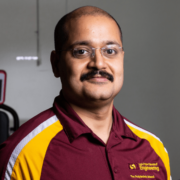
Human and Robotic Connection
How can we better connect robotics and human space exploration?
Despite tremendous technological progress in space exploration, human cognition, dexterity and ingenuity is still the deciding factor behind the success of any mission. Low-gravity environments in space pose a multitude of challenges to astronauts. Even seemingly simple motor skills such as grasping, locomotion, or lifting an object can become particularly challenging in such environments. At the same time, it is critical to exercise in space in order to avoid bone and muscle loss. In this project, we investigated symbiotic human-robot interaction in order to assist astronauts in their activities while also maintaining healthy body function. In particular we developed Space HeSA (Hip Exoskeleton for Superior Assistance), a lightweight assistive, robotic device for space exploration. Space HeSA uses state-of-the-art machine learning methods in order to interpret human intentions and proactively engage in current tasks.
Key accomplishments
- Developed the first prototype of the Space HeSA (Hip Exoskeleton for Superior Assistance) worn through a belt to assist human users in lifting tasks. Verbal commands by the astronaut are also recognized and used to switch between different modes.
- New robotics technology developed within this project is also used to improve the quality of work and life on Earth.
Team members




